12 inspirational Scots commemorated with plaques across nation
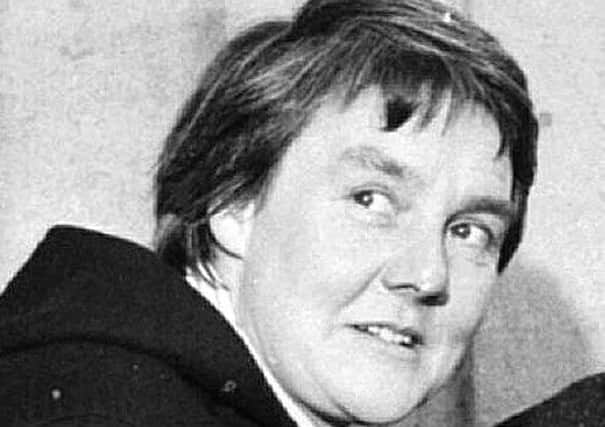

Eardley became famous for her drawings and paintings of poor Glasgow children, who played in the streets near her studio in the city’s East End.
She later moved to Catterline, a fishing village in Aberdeenshire where she painted land and seascapes until her death from cancer in 1963, aged just 42.
Advertisement
Hide AdAdvertisement
Hide AdEardley, who remains one of Scotland’s most enduringly popular artists, is one of a dozen figures being honoured in the latest round of Historic Environment Scotland’s (HES) Commemorative Plaque Scheme.
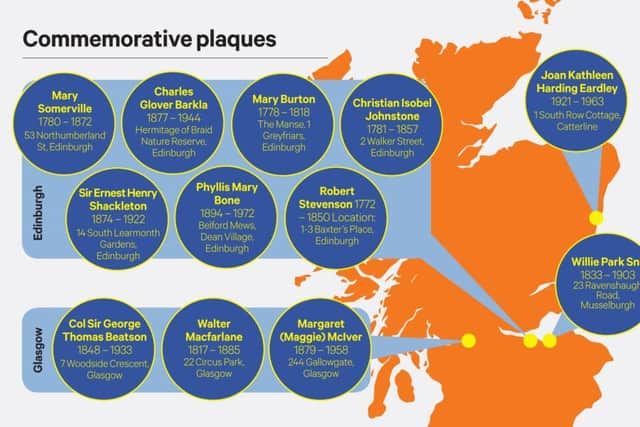

The plaque will be mounted at 1 South Row Cottage in Catterline.
The scheme, which is now in its fifth year, celebrates the life and work of significant persons from history by highlighting the link between them and a building connected with their work or life.
Each year, there are 12 notable recipients.
Others celebrated this year include the mathematician and astronomer Mary Somerville; Colonel Sir George Thomas Beatson, the surgeon famed for his contribution to the treatment of cancer; 19th century golfing pioneer Willie Park Snr; and lighthouse builder Robert Stevenson among others.
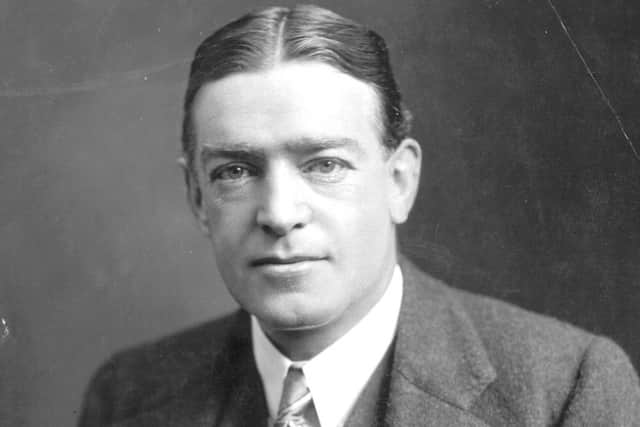

Martin Ross, HES’s Policy and Projects Manager, said yesterday: “By running this scheme, we are placing a spotlight on the social and human stories behind Scotland’s local and national architecture and the different contributions of those who helped to shape Scotland’s story.
“This latest group of recipients highlights this diversity and ranges from explorers and writers to mathematicians and golfers.
“We hope that by recognising them in this way it encourages people to find out more about their role in Scotland’s varied and extensive history.”
Advertisement
Hide AdAdvertisement
Hide AdCabinet Secretary for Culture, Tourism and External Affairs, Fiona Hyslop said: “This latest round of plaque recipients celebrates a range people from different walks of life and various periods of Scottish history.
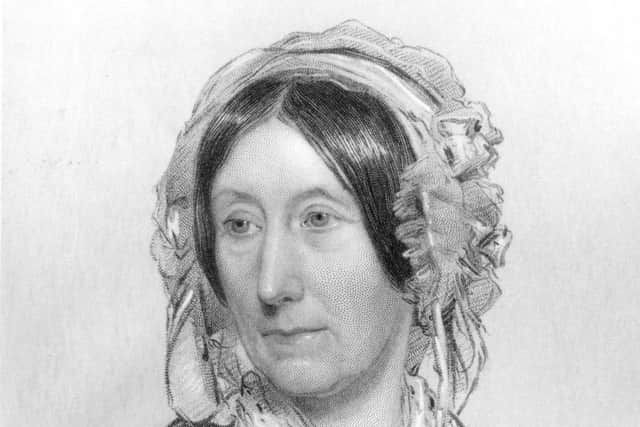

“It’s especially encouraging to see a greater representation for women – from astronomer Mary Sommerville to artist Joan Eardley, whose powerful paintings transformed Scotland’s everyday surroundings.
“I hope that today’s announcement will lead to a far greater recognition of the contribution each of these remarkable people have made to Scottish society and, in many cases, to the wider world.”
Eardley was born in Sussex, but went with her Scottish mother, Irene Morrison, to live in Bearsden, Glasgow, at the age of 18. She enrolled at Glasgow School of Art in 1940 and was influenced by the Scottish Colourists.
She set up a studio in Glasgow, where she became known for her drawings and paintings of poor city children, often playing in the streets in ragged clothes, the older girls looking after younger siblings.
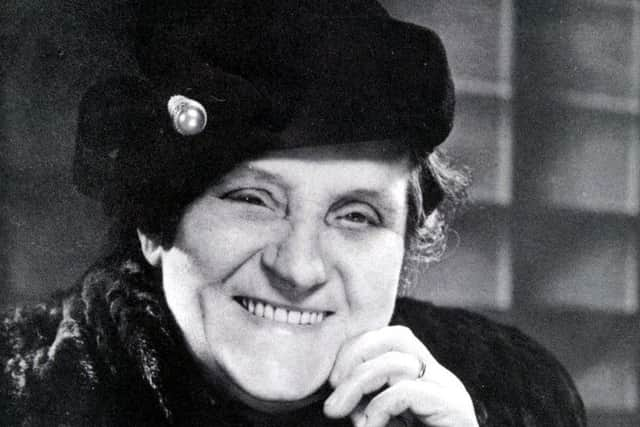

In 1955 she became an associate of the Royal Scottish Academy and in 1963 she was elected a full member of the academy.
She died in 1963, after being diagnosed with breast cancer which spread to the brain. Her ashes were scattered on the beach at Catterline.
THE 12 RECIPIENTS
Advertisement
Hide AdAdvertisement
Hide Ad1) Joan Kathleen Harding Eardley 1921 – 1963 British artist noted for her portraiture of street children in Glasgow and for her landscapes of the fishing village of Catterline and surroundings on the North east coast of Scotland.
Location: 1 South Row Cottage, Catterline, AB39 2UL
2) Mary Somerville 1780 – 1872 Mathematician, astronomer, one of Scotland’s greatest women scientists. Was hailed by the London Post as ‘The Queen of Nineteenth – Century Science’.


Location: 53 Northumberland St, Edinburgh
3) Colonel Sir George Thomas Beatson 1848 – 1933 Was a Glasgow based surgeon remembered for his significant contribution to the treatment of cancer. He also set up a home nursing service that revolutionised patient care, which demonstrates his characteristic concern for the welfare of his patients.
Location: 7 Woodside Crescent, Glasgow.
4) Sir Ernest Henry Shackleton 1874 – 1922
Polar explorer who led three British expeditions to the Antarctic, and one of the principal figures of the period known as the Heroic Age of Antarctic Exploration
Location: 14 South Learmonth Gardens, Edinburgh
5) Charles Glover Barkla 1877 – 1944 British physicist and Nobel prize winner for Physics in 1917. He was a key experimentalist solidifying our understanding of the quantum world.
Location: Hermitage of Braid Nature Reserve, Braid Road, Edinburgh
6) Willie Park Snr 1833 – 1903 One of the most prominent Scottish golfers in the mid-late 1800s, who promoted the development of the game as an open event which came to be known as the ‘Open Championship’. He won the Open four times and was the greatest golfer of his day.
Location: 23 Ravenshaugh Road, Musselburgh
Advertisement
Hide AdAdvertisement
Hide Ad7) Walter Macfarlane 1817 – 1885 Local politician and pioneer of pre-fabricated architectural ironwork, who supplied rainwater goods, bandstands, fountains, banking halls and entire railway stations to India and South Africa.
Location: 22 Circus Park, Glasgow.
8) Margaret (Maggie) McIver nee Russell 1879 – 1958 The Barras Queen saved money to buy the land for a market to enable the hawkers to sell their goods. Enclosing the market allowed Maggie to build a second floor, which in turn could be used as a ballroom, later becoming a venue for dances, and attracted musicians from all over the world.
Location: 244 Gallowgate, Glasgow
9) Phyllis Mary Bone 1894 – 1972 Renowned female sculptor and illustrator, who was the first female Royal Scottish Academy member, contributing to Scotland’s rich sculptural heritage and inspiring women artists in Scotland.
Location: Belford Mews, Dean Village, Edinburgh
10) Mary Burton 1778 – 1818 Scottish novelist and writer. Burton holds an important place in the history of Scottish women’s literature, standing alongside her contemporaries Susan Edmonstone Ferrier and Christian Isobel Johnstone in developing a tradition of national domestic fiction in post-Enlightenment Scotland.
Location: The Manse, 1 Greyfriars, Edinburgh
11) Robert Stevenson 1772 – 1850 Famous Scottish lighthouse engineer and the grandfather of ‘Treasure Island’ author Robert Louis Stevenson. He devoted himself with determination to follow the profession of a civil engineer, and applied himself to the practice of surveying, and architectural drawing.
Location: 1-3 Baxter’s Place, Edinburgh
12) Christian Isobel Johnstone 1781 – 1857 Prolific journalist and author, writing a number of popular fiction and non- fiction works during her lifetime. Mrs Johnstone wished to curate and present stories in a manner that could be received by the working poor, to open up the demographic of the readership and give more people the opportunity to read.
Location: 2 Walker Street, Edinburgh